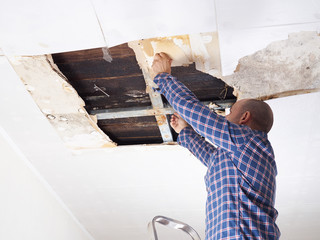Founded in 1996, Choral Project has been hailed by the San Jose Mercury News as “a concert that immediately jumps to some imaginary personal list of the best concerts you will ever hear.” Their vision is to transform and heal, and their mission is to connect one another through choral theatre, education, and musical excellence.
Madison Choral Project is an award-winning choral ensemble founded by Artistic Director Daniel Hughes. The group has been recognized for its innovative performances and educational outreach programs. They are also dedicated to promoting the choral arts by performing premieres and commissioning new works. Their work has been featured in numerous national and international festivals and invitationals.

Their vision is “to heal our world through music and words,” and their mission is to connect one another through choral theater, education, and musical excellence. The ensemble has won many awards in California and internationally and is renowned for its beauty of sound and stellar musicianship. The group has also released seven albums.
Founded in 1996, the San Jose-based group has gained an excellent reputation for its concerts, interfaith services, choral festivals, and invitationals. Their latest CD, “Tell the World,” features 17 live cuts with piano, bass, drums, and percussion. The Choral Project is a versatile and multi-faceted organization, with artistic director Daniel Hughes in constant demand as a pianist, composer, conductor, teacher and clinician.
The choral project is also committed to educational outreach and provides free concerts at schools throughout Silicon Valley. The ensemble has also conducted master classes with notable musicians, including world-renowned cellist Yo-Yo Ma. Founder and Artistic Director Daniel Hughes has received several awards, including a 2013 Arts Council Silicon Valley Artist Laureate in the “On Stage” category; a 2010 Silicon Valley Arts & Business Award; 4th place in the Small Ensemble Category at the 35th International Choral Competition, Gorizia, Italy; 2nd place award at the ACDA National Student Conducting Competition; and the Christina Cadena Memorial Accompanying Scholarship.
Hughes is a graduate of the University of Illinois, Urbana-Champaign, where he studied piano and voice. He has a wide range of professional experience, including managing events at amfAR, the Foundation for AIDS Research, and creating communications strategies and events at the Lesbian, Gay, Bisexual, and Transgender Community Center. He has also served as a marketing strategist for The Choral Project, Silicon Valley Gay Men’s Choir, and Silicon Valley Shakespeare.
Choral performance is a specialized type of music that incorporates multiple voice parts, and it requires specific skills for both the singers and the conductor. In addition to coordinating the singers’ voices, the conductor must also shape the sound of the ensemble and establish an idea of the music’s tone. He or she must be both an artist and a craftsman, moulding the sound towards this idea by correcting errors, blending voices, shaping timbre and unifying expression.
These skills have made choral conductors into artists, craftspeople, and mentors. This paper examines a variety of disciplinary perspectives on choral conducting, identifying pedagogical and artistic elements that distinguish the profession from other forms of musical leadership. This scholarly inquiry is based on an empirical study of the experiences of a large sample of choral conductors, who responded to a survey on their career and leadership journey.
The participants were recruited through email invitations sent by choral associations and the Federation of Choral Conductors in Norway. They were asked to rate their views on a number of competencies and to describe the contexts in which they practiced. The results show that differences in conductors’ views on competency are shaped by the context in which they work. However, the most important factors that influence these views are the level of the choir and years of experience.
In addition, the survey examined how conductors use their knowledge and skills to meet the challenges of their practice. It found that choral conductors are frequent participants in training organised by their choral associations. This training is often a full-week course or a weekend course, and it includes masterclasses with experienced conductors. Moreover, many conductors have a high level of professional development and continue to learn throughout their careers.
The Choral Project is a 501(c)(3) non-profit organization that performs regularly in local venues and participates in community outreach programs, including a choral mentorship program for local high school students. It is also involved in a variety of fundraising activities, including its annual Choral Composition Contest for high school students and undergraduates.
The Choral Project is a 501(c)(3) non-profit organization involved in community outreach. They provide a choral mentorship program for local high school students and offer joint performances with visiting choirs. They also host an annual choral composition contest for high school and undergraduate students. The group has recorded ten albums, including The Cycle of Life, Of Christmastide, Water & Light, Winter, One is the All, Tell the World and Yuletide. The group has won multiple awards and accolades, including being named one of the top ensembles in the country by San Francisco Classical Voice.
The Crooked River Choral Project is a collection of artful choral music that was composed with music teaching and learning in mind. It features music with lyrics that inspire the human spirit and nurture the best in musicians of all levels. It is rooted in solid pedagogical thinking, giving music educators rich teaching opportunities with quality literature. Each title in the series includes performance recordings and rehearsal recordings (voice parts sung by an adult vocal model, and an accompaniment only track) and CD-ROM with reproducible scores.
CRCP1 Volume 1 features the elegant, pentatonic melody iWhere Go the Boats?, by Roger Sams. Its clear a cappella diction and low so and la melodies give students opportunities to cultivate beautiful, lyrical singing. Suitable for both classroom and concert, it is ideal for literacy work and offers opportunities to explore the lower range of the voice.
In a time when sympathy and understanding appear to be fading, this poignant piece of music is an important reminder that we are all connected as members of the human family. The Choral Project’s performance of this work earned standing ovations from audience members and critics alike.
The Choral Project was founded to give students the experience of working on a professional level in the field of choral music. While most professional choruses rehearse on a weekly basis and use the same members throughout their season, Choral Project operates on a project model. Singers from all over the country come together for singular projects, perform and then disperse again.
The educational outreach programs offered by Choral Project help develop a sense of community among young singers. Many of these singers go on to study music in college and beyond, and some even join professional choirs. These programs are a growing trend in the choral world, and are part of a broader effort to expand the audience for choral music. This includes bringing performances to schools, hospitals, and other community spaces.
The Choral Project has a special partnership with the University of Southern California. Their program is called the Tonality Scholars, and it will showcase the talents of high school vocalists from up to four Los Angeles-area schools. This partnership is a reflection of the Choral Project’s commitment to using choral music as a catalyst for social change and community activism.
Choral Project is also a leader in integrating disabilities into their performances. The group’s Inclusive Choir is an opportunity for people with profound and multiple learning disabilities to make music together. The participants are encouraged to be their own musical leaders and create their own meaning from the songs they sing. The results are moving and inspiring.
In addition to the symposia and workshops, the VOICE project organized numerous choral singing competitions and events throughout Europe. These events are meant to improve the quality of vocal music and bring conductors from all over the world together. The competitions and events also allow conductors to share their knowledge with each other and learn new methods and approaches.
The VOICE project brought together renowned music pedagogues, professors of teacher training institutions, conductors, choirs and vocal ensembles from around the world. The conference was a valuable platform of fruitful exchange and offered new opportunities for networking and starting European cooperation projects. The project has inspired the whole choral world to think about innovative methods of connecting with each other and spreading the word. It has also ushered in a shift from top-down networking to peer-to-peer collaborations. This has led to a gradual expansion of the network and a slow increase in the number of European choral projects.

 For larger dents and holes, a patch should be cut to size and then screwed into place. It is important to use proper technique when taping and mudding
For larger dents and holes, a patch should be cut to size and then screwed into place. It is important to use proper technique when taping and mudding